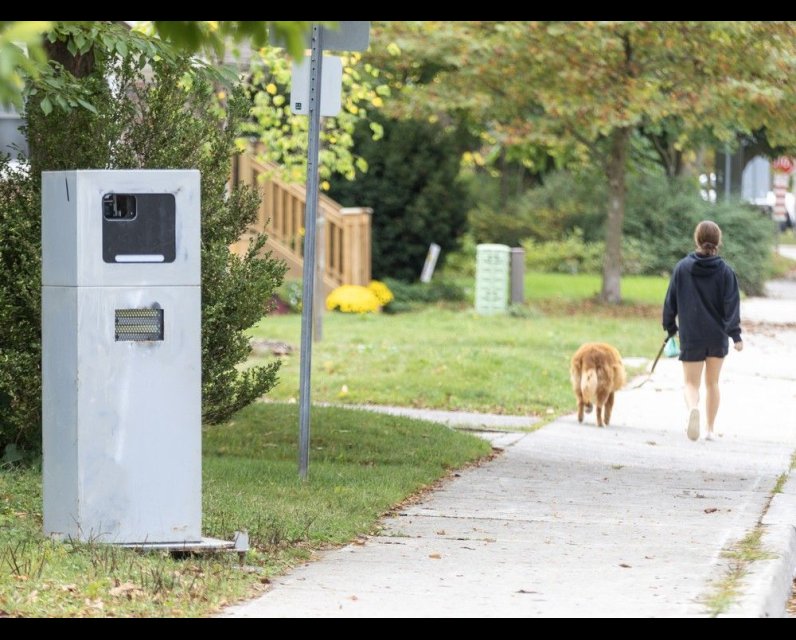Ford government proceeding on speed camera ban as advocates champion its necessity and value

Baked into a wide-ranging bill aimed at protecting and strengthening Ontario’s economy tabled by Doug Ford’s government on Monday, was a provision that would bring about the end of speed cameras province-wide.
If passed, the government would make good on the premier’s vow to ban the automated speed enforcement (ASE) devices he has bemoaned as nothing more than a “cash grab” from taxpayers.
Red Tape Reduction Minister Andrea Khanjin introduced the legislation as the House began a new session and as a handful of demonstrations decrying the government’s plans were held throughout the province, including several in Toronto where there are 150 active devices, many of which have been the target of vandals.
Here’s a snapshot of what’s the latest on speed cameras in Ontario.
What does the legislation say about speed cameras?The Building a More Competitive Economy Act ’s primary purpose is to bolster the economy by streamlining permits and approvals for businesses and municipalities. It also expands labour mobility by granting workers from other provinces — predominantly those in the health care sector — the right to work in Ontario.
However, it would also repeal a section of the Highway Traffic Act that allows for drivers to be penalized after being caught speeding by an ASE while also empowering the minister of transportation to require municipalities to install signage in school zones.
In a news release , the province said the goal is to protect taxpayers and focus on “alternative traffic-calming measures such as speed bumps, speed cushions and roundabouts, as well as enhanced signage and education campaigns.”
Asked on Monday why the amendments found their way into the economy-focused omnibus bill, Transportation Minister Prabmeet Sarkaria told reporters it was about “protecting the pocketbooks of Ontario” and government’s “focus has always been on preventing speeding at the point of entry into one of these zones, not by a ticket three weeks later.”
“This is the legislative vehicle we will use to get that done,” he said in a press conference from Queen’s Park.
What were Monday’s speed camera demonstrations about?Elsewhere on Monday, parents, caregivers and road safety advocates held a coordinated province-wide day of action in support of ASE programs.
Save Our Safety Cameras demonstrations were held in west end Toronto, East York, Midland, Vaughan, Caledon, and Ottawa.
Organizers, ahead of the events, said ASEs in school and community safety zones have proven effective in reducing speeds. They also cited new research by The Hospital for Sick Children and Toronto Metropolitan University that found speed cameras reduced the number of speeding vehicles in urban school zones by 45 per cent.
The study also found that the maximum speed of 85 per cent of vehicles fell by more than 10 km/h.
Tom DeVito, who helped put together a demonstration in Toronto, told the Canadian Press that while the other proposed traffic calming measures are welcome, it doesn’t make sense to remove speed cameras from the “tool kit.”
“You still need a screwdriver, and that’s what speed safety cameras are,” he said. “This would be like a carpenter saying, I don’t need a screwdriver because I’m updating and improving the hammer that I own.”
At an event outside a school near a busy Ottawa roadway where an ASE is deployed, participants also promoted the effectiveness of ASEs and questioned the premier and the government’s logic.
“I need (Ford) to explain to us why fines for bad behaviour — fines for breaking the law — is a problem in this area and not in others,” Elizabeth MacDonald told CTV .
“I need this camera to do its job, the job it’s already done and the job it continues to do.”
Sarkaria, when asked at the press conference if the demonstrations were giving government pause, said “we agree on the end purpose” but reiterated its opposition to the use of ASE technology as a tool.
What does the Ontario Traffic Council think?Since the campaign against speed cameras began, Ford and Sarkaria have continued to point out that only 37 municipalities have introduced them, while more than 400 have chosen not to.
Geoff Wilkinson, executive director of the Ontario Traffic Council, said it’s more likely that those municipalities simply haven’t yet explored ASE or are early in the process.
He pointed to Windsor, which was about to introduce its program the day Ford announced a ban was coming down the pike.
“I would get inquiries from municipalities on a regular basis looking for more information on how to run a program within their communities,” Wilkinson told National Post.
The council feels ASE is effective and opposes an outright ban, suggesting adjusting the existing regulations to eliminate inconsistencies, such as the “threshold speeds at which a driver may receive a ticket.”
Thresholds can vary by municipality, and the fine is based on how much the driver was speeding — $3 per kilometre for less than 20 km/h over; $4.50 for 20 to 29, $7 for 30 to 50, and $9.75 for 50 km/h or more, according to ASE Ontario.
Wilkinson said not only do the majority of participating municipalities follow a consistent threshold, legislation passed with the spring budget made it so that “the minister has an opportunity to request data from municipalities and can actually request that the programs be amended and potentially be shut down.”
As for the province’s proposed measures in place of cameras, Wilkinson said all those tools have been in place since ASE legislation was first introduced in 2017, a time when OTC and other advocates were already pleading for more ways to protect children, seniors and other vulnerable road users.
When it comes to speed reduction initiatives, Wilkinson said the OTC points to the three components — educating drivers, engineering solutions like those proposed by government, and environment, which are all unique.
“Where we might have speed humps that may work in one particular area, they might not work on another road environment where automated speed enforcement may be the better solution,” he said.
He said experts are more than willing to sit down with government to discuss implementing “a responsible, consistent and transparent program” that will reduce speed and save lives.
Others who’ve spoken in support of ASE use include the Ontario Association of Chiefs of Police — along with a group of retired chiefs from Peel, Halton, Niagara, Ottawa and other areas, according to the Toronto Star — and elected officials from various municipalities, including 20 mayors who co-signed a letter earlier this month urging Ford to divert course and find a compromise.
If the ban goes through, they said the province should cover the costs related to cancelling the programs, which could include increases to policing and staff severance expenses, as well as shortfalls to public safety programs already funded by ASE revenue.
That campaign was co-led by Brampton Mayor Patrick Brown, whose city has a province-high 185 cameras and a just-opened $46 million ticket-processing centre staffed by 30 enforcement officers and 12 others.
Ford responded with a letter of his own days later, sharing it on X where he wrote: “ To the mayors asking the government to continue to allow cash grab speed cameras in Ontario, I have been absolutely clear: The answer is no.”
To the mayors asking the government to continue to allow cash grab speed cameras in Ontario, I have been absolutely clear: The answer is no. pic.twitter.com/xiaxfoPzuz
— Doug Ford (@fordnation) October 7, 2025
Our website is the place for the latest breaking news, exclusive scoops, longreads and provocative commentary. Please bookmark nationalpost.com and sign up for our daily newsletter, Posted, here.




Comments
Be the first to comment